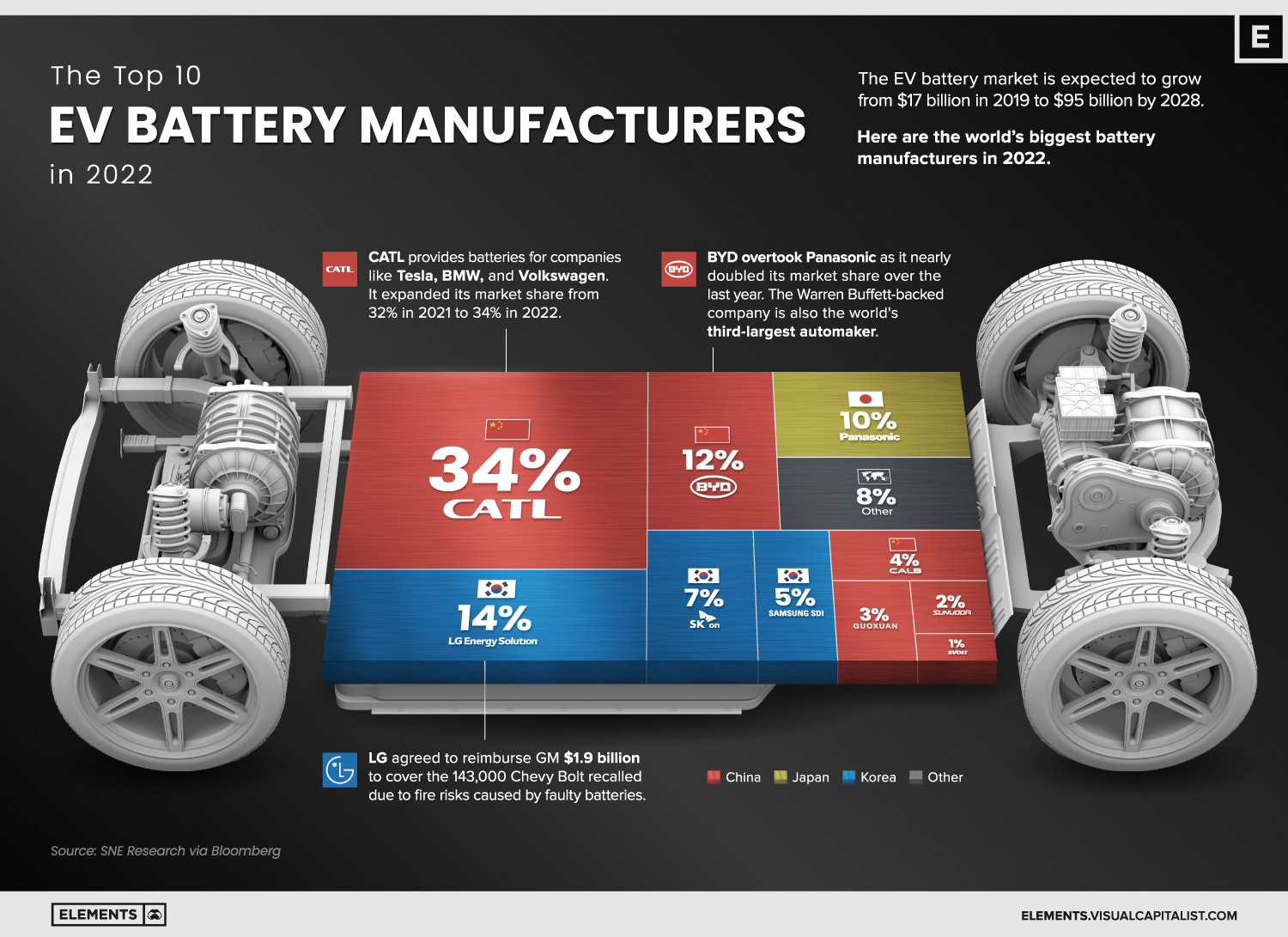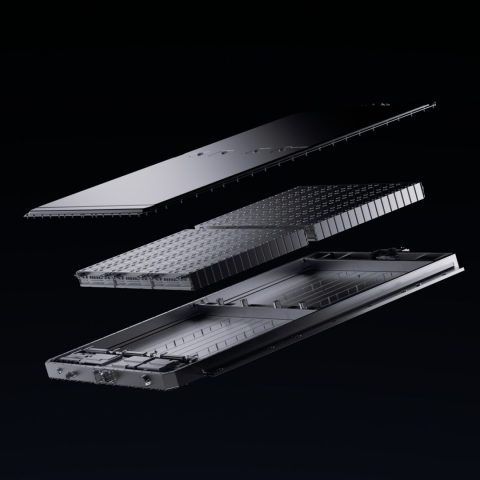Contemporary Amperex Technology Co., Ltd. (CATL), a pioneering force in the automotive industry, has unveiled a groundbreaking electric vehicle battery that promises an unprecedented lifespan of 16 years or an astonishing 2 million kilometers. This revolutionary innovation is set to redefine the future of electric cars, offering unparalleled durability and efficiency. The new battery’s impressive specifications are expected to significantly boost consumer confidence in electric vehicles, potentially paving the way for widespread adoption. This technological breakthrough could be the game-changer the automotive world has been waiting for, marking a significant step forward in the quest for sustainable transportation solutions.
Revolutionary Battery for Electric Cars: A New Milestone Achieved
Contemporary Amperex Technology Co., Ltd. (CATL), a leading global battery manufacturer, has unveiled a revolutionary battery that promises to last for 16 years or cover a distance of 2 million kilometers. This breakthrough in battery technology is set to redefine the electric vehicle (EV) industry, providing consumers with a more sustainable and cost-effective option for transportation.
What Makes This Battery So Revolutionary?
This new battery from CATL boasts an impressive lifespan of 16 years, which significantly surpasses the average lifespan of conventional EV batteries. Moreover, it can cover an astonishing 2 million kilometers, making it a game-changer in the automotive industry. The extended lifespan and increased mileage capacity are attributed to the advanced materials and innovative manufacturing process used by CATL.
How Does It Compare to Other EV Batteries?
Compared to other EV batteries available in the market, CATL’s new battery stands out for its remarkable longevity and mileage. Most EV batteries typically last around 8 to 10 years and cover up to 150,000 miles. The new battery from CATL more than doubles this lifespan and mileage, providing consumers with a more reliable and efficient option for their electric vehicles.
What Are the Environmental Implications?
The introduction of this revolutionary battery could have significant environmental implications. With a longer lifespan and higher mileage capacity, EV owners will need to replace their batteries less frequently, resulting in reduced waste and a lower carbon footprint. Additionally, the increased adoption of EVs powered by these batteries could lead to a decrease in greenhouse gas emissions, contributing to a cleaner environment.
How Will This Impact the EV Industry?
The unveiling of this new battery by CATL is expected to have a profound impact on the EV industry. It could increase consumer confidence in EVs, leading to higher adoption rates and further driving the growth of the EV market. Moreover, this innovation may encourage other manufacturers to invest in research and development to create more efficient and sustainable batteries, ultimately benefiting the environment and consumers alike.
What Challenges Lie Ahead?
While the introduction of this revolutionary battery is a significant milestone, there are still challenges that need to be addressed. One of the primary concerns is the cost of these advanced batteries, which may be higher than conventional EV batteries. Additionally, the recycling process for these batteries will need to be developed and implemented to ensure that they do not contribute to environmental waste at the end of their lifespan.
| Feature | CATL’s Revolutionary Battery | Conventional EV Batteries |
|---|---|---|
| Lifespan | 16 years | 8 to 10 years |
| Mileage Capacity | 2 million kilometers | Up to 150,000 miles |
| Environmental Impact | Reduced waste and lower carbon footprint | Higher waste and carbon footprint due to more frequent replacements |
| Industry Impact | Increased consumer confidence and higher adoption rates | Stagnant growth due to consumer concerns over battery lifespan |
What is the controversy with CATL?
CATL, or Contemporary Amperex Technology Co., Ltd., is a Chinese battery manufacturer that has been at the center of several controversies in recent years. Some of the most significant issues include:
- Environmental Concerns: CATL has faced criticism for its environmental impact, particularly in terms of the extraction and use of cobalt, a key component in battery production. Cobalt mining has been linked to environmental degradation and human rights abuses in countries like the Democratic Republic of Congo.
- Technology Patent Disputes: CATL has been involved in several legal disputes over patent infringement claims, particularly with other battery manufacturers. These disputes have raised concerns about the company’s intellectual property practices and the potential impact on the global battery market.
- Financial and Corporate Governance Issues: CATL has faced scrutiny over its financial reporting and corporate governance practices. In 2020, the company was fined by Chinese regulators for violating securities laws, leading to concerns about transparency and accountability within the company.
These controversies have led to increased scrutiny of CATL and its practices, both within China and internationally. As the company continues to grow and expand its operations, addressing these issues will be crucial for maintaining public trust and ensuring sustainable growth.
Environmental Impact of Cobalt Mining
CATL’s reliance on cobalt, a key component in lithium-ion batteries, has raised concerns about the environmental and social impacts of cobalt mining. Cobalt is often extracted in countries with weak environmental and labor regulations, leading to significant environmental degradation and human rights abuses. Some of the key issues related to cobalt mining include:
- Environmental Pollution: Cobalt mining can result in significant environmental pollution, including the release of toxic chemicals and heavy metals into local water sources and soil.
- Child Labor: Cobalt mining has been linked to child labor, with reports of children working in dangerous conditions to extract the mineral.
- Community Displacement: Cobalt mining can lead to the displacement of local communities, as mining operations often require large areas of land and can result in the destruction of homes and livelihoods.
Addressing these issues will be critical for CATL and other companies that rely on cobalt to ensure that their operations are sustainable and ethical.
Legal Disputes and Patent Infringement
CATL has been involved in several legal disputes over patent infringement claims, particularly with other battery manufacturers. Some of the key issues related to these disputes include:
- Patent Infringement Claims: CATL has been accused of infringing on the patents of other companies, leading to legal disputes and potential fines.
- Technology Theft Allegations: There have been allegations that CATL has stolen technology from other companies, further exacerbating tensions and legal disputes in the industry.
- Impact on Industry Competition: These legal disputes have raised concerns about the competitive landscape of the battery market, with some companies accusing CATL of using its market dominance to stifle innovation and competition.
Resolving these disputes and ensuring that the company respects the intellectual property rights of others will be essential for maintaining a positive reputation and promoting healthy competition in the industry.
Financial and Corporate Governance Concerns
CATL has faced scrutiny over its financial reporting and corporate governance practices, leading to concerns about transparency and accountability within the company. Some of the key issues related to these concerns include:
- Financial Misreporting: CATL has been accused of misreporting its financial data, leading to fines and penalties from Chinese regulators.
- Lack of Transparency: The company has been criticized for a lack of transparency in its financial reporting and corporate governance practices, making it difficult for investors and stakeholders to assess the company’s true financial health.
- Corporate Governance Issues: CATL has faced criticism for its corporate governance practices, including concerns about the independence of its board members and the lack of diversity in its leadership.
Improving transparency and strengthening corporate governance practices will be crucial for restoring investor confidence and ensuring the long-term sustainability of the company.
Which EVs have CATL batteries?
Overview of CATL and its Importance in EV Industry
CATL, or Contemporary Amperex Technology Co., Limited, is a Chinese battery manufacturer that specializes in producing lithium-ion batteries for electric vehicles (EVs). It is one of the largest battery manufacturers in the world and supplies batteries to many major EV brands. CATL’s batteries are known for their high energy density, long cycle life, and reliability, making them a preferred choice for many EV manufacturers.
EVs That Use CATL Batteries
CATL supplies batteries to a wide range of EV models from various manufacturers. Here are some examples:
- BYD Tang: A popular Chinese EV model, the BYD Tang uses CATL batteries and offers a range of up to 301 miles on a single charge.
- Geely Geometry A: This compact EV from Geely, a Chinese automaker, also uses CATL batteries and has a range of up to 310 miles.
- BMW iX3: The BMW iX3, an electric SUV from the German luxury brand, uses CATL batteries and offers a range of up to 273 miles.
- Hyundai Kona Electric: The Hyundai Kona Electric, a compact crossover EV, uses CATL batteries and has a range of up to 258 miles.
- Nissan Leaf: Some versions of the Nissan Leaf, a popular EV model, use CATL batteries and offer a range of up to 239 miles.
Advantages of CATL Batteries
CATL batteries are known for their high performance and reliability. Here are some advantages of using CATL batteries in EVs:
- High Energy Density: CATL batteries have high energy density, which means they can store more energy per unit of weight and volume, resulting in longer driving ranges for EVs.
- Long Cycle Life: CATL batteries are designed to last for many years, even after thousands of charge-discharge cycles, making them a cost-effective option for EV manufacturers.
- Reliability: CATL batteries are known for their reliability and durability, ensuring consistent performance over time.
- Cost-Effectiveness: CATL batteries are generally cheaper than batteries from other manufacturers, making them an attractive option for EV manufacturers looking to reduce costs.
What is the new product launched in 2024 for CATL?
New Product Launch in 2024 for CATL
Contemporary Amperex Technology Co., Ltd. (CATL), a leading global battery manufacturer, has unveiled a new product for the year 2024. This innovative battery solution is designed to cater to the growing demand for sustainable energy solutions in the automotive and renewable energy sectors. The new product is a testament to CATL’s commitment to advancing battery technology and promoting eco-friendly practices.
Product Overview
The new product launched by CATL in 2024 is a cutting-edge battery solution that offers enhanced performance, efficiency, and sustainability. It features advanced materials and a unique design that allows for better energy storage and release capabilities. This product is poised to revolutionize the battery industry with its groundbreaking technology.
- Enhanced Performance: The new battery offers improved power density and efficiency, making it an ideal choice for electric vehicles and renewable energy systems.
- Sustainability: The product is designed with eco-friendliness in mind, utilizing recyclable materials and minimizing environmental impact.
- Advanced Materials: The battery features the latest advancements in material science, ensuring optimal performance and longevity.
Key Features
The new product from CATL boasts several key features that set it apart from existing battery solutions. These include:
- High Energy Density: The battery offers a higher energy density, allowing for longer driving ranges in electric vehicles and more efficient energy storage in renewable energy systems.
- Improved Cycle Life: The product is designed to have a longer lifespan, reducing the need for frequent replacements and minimizing waste.
- Enhanced Safety: The battery features advanced safety measures to prevent overheating and ensure safe operation under various conditions.
Impact on the Industry
The launch of this new product by CATL in 2024 is expected to have a significant impact on the battery industry. It will:
- Drive Innovation: The introduction of this advanced battery solution will encourage other manufacturers to invest in research and development, driving innovation in the industry.
- Expand Market Opportunities: The new product will open up new market opportunities for CATL and other companies, particularly in the electric vehicle and renewable energy sectors.
- Enhance Sustainability: By promoting the use of eco-friendly battery solutions, the product will contribute to a more sustainable future for the energy sector.
Frequently Asked Questions
What is the main innovation in the battery unveiled by CATL?
The main innovation in the battery unveiled by CATL is its revolutionary longevity. This battery can last up to 16 years or 2 million kilometers, which is significantly longer than the average lifespan of most electric vehicle batteries currently available in the market. This advancement in battery technology will undoubtedly revolutionize the electric vehicle industry, as it addresses one of the primary concerns of potential buyers – battery durability. With such a long-lasting battery, electric vehicle owners will not have to worry about replacing their batteries frequently, making electric cars more practical and cost-effective.
How does the new battery’s lifespan compare to other electric vehicle batteries?
The new battery’s lifespan is significantly longer than most electric vehicle batteries currently available. Most electric vehicle batteries have an average lifespan of around 8 to 10 years or approximately 150,000 to 200,000 kilometers. In comparison, the CATL battery can last up to 16 years or 2 million kilometers, making it nearly twice as long-lasting as the average electric vehicle battery. This increased lifespan will not only provide peace of mind for electric vehicle owners but also reduce the overall cost of ownership, as they will not have to replace their batteries as frequently.
What impact will this new battery have on the electric vehicle market?
The impact of this new battery on the electric vehicle market will be substantial. With a lifespan of up to 16 years or 2 million kilometers, electric vehicle owners will no longer have to worry about the durability of their batteries, which has been a major concern for many potential buyers. This innovation will likely increase consumer confidence in electric vehicles, leading to higher sales and a faster adoption rate of electric vehicles worldwide. Additionally, the reduced need for frequent battery replacements will also lead to a decrease in the environmental impact of electric vehicle production, as fewer batteries will need to be manufactured and recycled.
How will the new battery affect the cost of owning an electric vehicle?
The new battery will significantly reduce the overall cost of owning an electric vehicle. One of the major concerns for electric vehicle owners is the cost of replacing the battery, which can range from a few thousand to several thousand dollars. With the CATL battery lasting up to 16 years or 2 million kilometers, electric vehicle owners will not have to worry about this expense as frequently, leading to lower maintenance costs over the life of the vehicle. Furthermore, the reduced need for frequent battery replacements will also decrease the environmental impact of electric vehicle production, as fewer batteries will need to be manufactured and recycled. This will not only benefit electric vehicle owners financially but also contribute to a more sustainable future for the automotive industry.
I’ve been working in technology and IT since 1993 and on the Internet as a blogger and webmaster since 2004. I love technology, gadgets, movies and travel. I love researching and writing about technology, travel and cars.



